There’s something fitting about a virtual guide to Peru. For would-be conquistadores, it was a land of fantasy and imagination. The very name of the country would have conjured up illusions of untold treasures, Inca emperors, wild beasts and heathen practices. Lima was the seat of Spain’s South American imperial territories for 300 years; it was where you had to be if you wanted to acquire booty, land, or influence. But it was traversed by impassable mountains and treacherous rivers, fringed by dark jungles in the east and uncharted seas to the west.
Explorers chased visions and mirages across Peru, too. Francisco de Orellana, the first European to explore the Amazon, in 1541, reported pitched battles between female warriors straight out of myth. Machu Picchu “discoverer” Hiram Bingham called one of the sites he unearthed the “Plain of Ghosts”. Archaeologists are still searching for lost cities – and occasionally finding one, as happened in 2002 when a team led by American Gary Ziegler and British writer and explorer Hugh Thomson identified Cota Coca in the Vilcabamba area of southern Peru.

But to get under the skin of this huge, diverse country, you need to be open to contemporary society as well as ancient sites, political realities as well as dreamy visions. Peru is one of the most culturally rich nations in the Americas, and its indigenous people continue to play an important role in daily life; it’s sometimes said you can only feel the depth of the Andean experience by running your fingers across one of the beautiful hand-woven textiles. Until that is on offer again, here are some less tactile encounters.
Read
Lost City of the Incas (1948) by Hiram Bingham is a natural place to begin a journey into Peru. “Few romances can ever surpass that of the granite citadel on top of the beetling precipices of Machu Picchu, the crown of Inca Land,” he wrote. In an age of minibuses and comfy trains, his derring-do journeys by mule and on foot are a reminder of old-school South American adventuring. If you prefer more recent books about intrepid travel, The White Rock (2001) by Hugh Thomson is exceptional; Thomson spent more than 20 years exploring the Sacred valley and other regions in the Inca heartland, and his book provides historical clarity as well as geographical context.
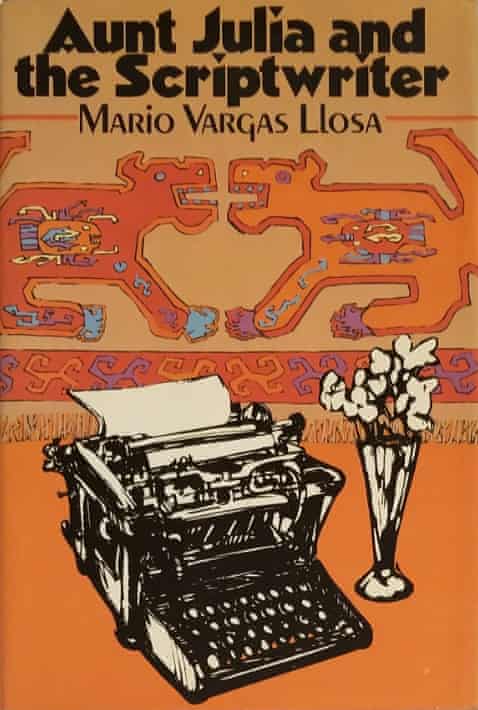
Peru’s most famous indigenous writer is Mario Vargas Llosa, a leading figure of the Latin American Boom which, in the 1960s and 1970s, claimed the continent’s history, culture, politics and pueblos as its own – and not some inchoate iteration of European or US development. While not a magic realist, Vargas Llosa said – in The Real Life of Alejandro Mayta (1984) – his rationale for making up stories when Peru was going through its darkest days of dictatorship, terrorism and political corruption: “No matter how ephemeral it is, a novel is something, while despair is nothing. Since it is impossible to know what’s really happening, we Peruvians lie, invent, dream and take refuge in illusion. Because of these strange circumstances, Peruvian life, a life in which so few actually do read, has become literary.”
Vargas Llosa’s narrative range is formidable, winning him the Nobel prize in 2010. An early collection, The Cubs and Other Stories (1959), evokes the Peru of his youth and explores machismo, school and university life, and the joys and jostling rivalries of the barrio. Aunt Julia and the Scriptwriter (1977), perhaps his most popular novel, is a comedy about mismatched love and soap opera culture. Death in the Andes (1993) is a detective novel set against the background of the Shining Path guerrilla uprisings.
In recent decades, many Peruvians have migrated to the US. American Chica (2001), by Marie Arana, former editor of the Washington Post’s literary pages, is an intimate, insightful memoir about growing up with a Peruvian father and American mother; she has also written the novel Lima Nights (2009) and an acclaimed biography of Simón Bolívar.
Watch
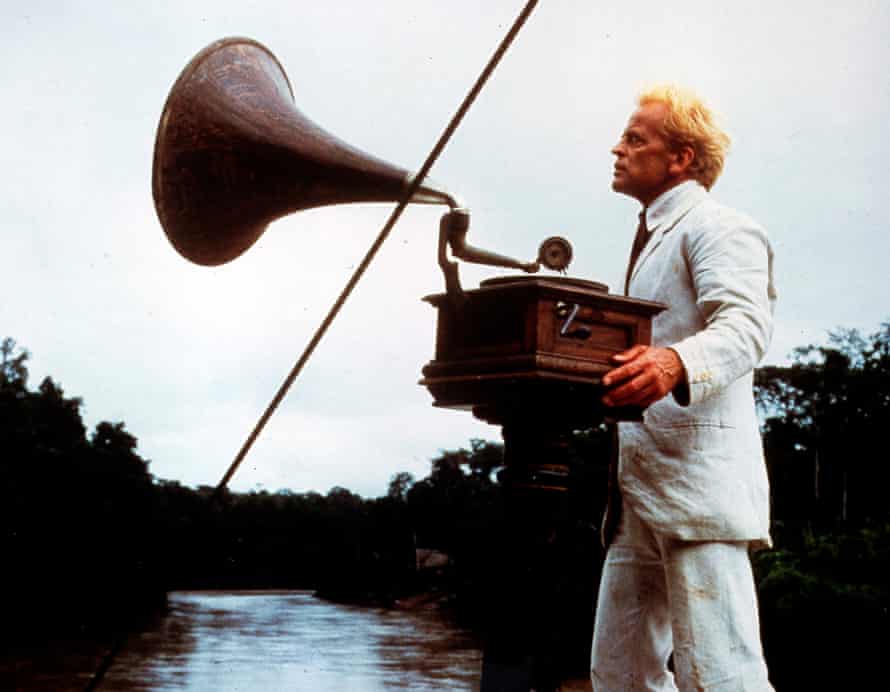
Peru is fertile ground for adventure stories, and Bingham’s book led to widespread fascination with “Indian” treasures and ancient sites. Charlton Heston plays archaeologist-explorer Harry Steele in Paramount’s rip-roaring adventure caper Secret of the Incas (1954), a film notable for being shot on location in Cusco and Machu Picchu. Steele, who sports a high-crowned fedora and well-worn leather jacket throughout, was the model for Indiana Jones.
Werner Herzog’s Fitzcarraldo (1982) also revolves around expats who find themselves in exotic locations, but is a different beast altogether. Based on the exploits of Peruvian rubber baron Carlos Fitzcarrald, it features Klaus Kinski as a crazed dreamer intent on transporting a steamship over the Andes and building an opera house in the remote city of Iquitos. It is almost a road movie, constantly on the move – except there is no road, but rather tangled jungle and white-water rivers. As Fitzcarraldo, the self-proclaimed “conquistador of the useless”, announces to his incredulous audience: “As true as I am standing here, one day I shall bring grand opera to Iquitos. I will outgut you. I will outnumber you. I will outbillion you.”
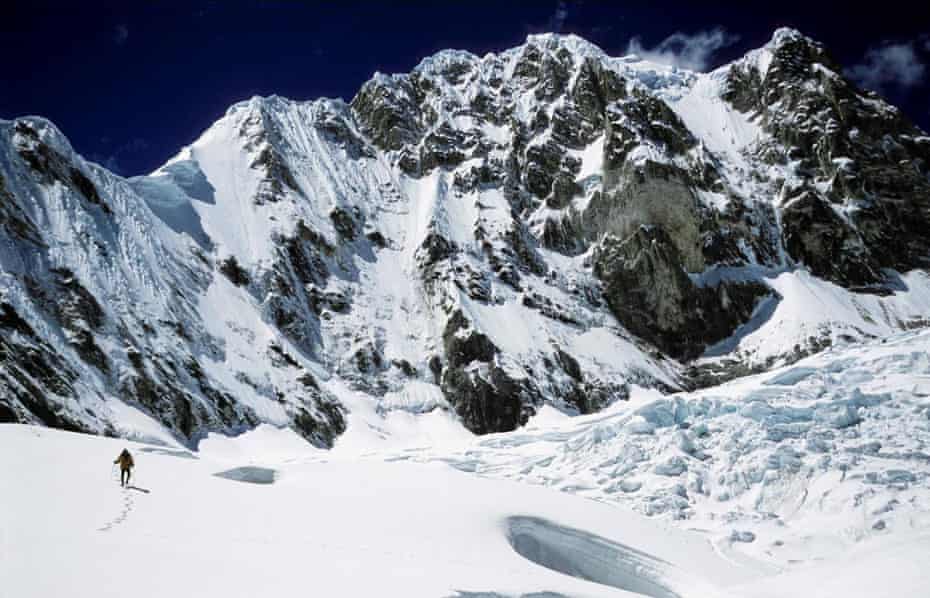
The challenges of actually taking on the Andes are revealed in Touching the Void (2003), about the drama that unfolded for Joe Simpson and fellow climber Simon Yates when they fell from the ice-clad north ridge of Siula Grande in central Peru’s Huayhuash range. This gripping film is a faithful rendering of Simpson’s book, where he writes that even while enduring unspeakable pain, he crawled out of the crevasse “to take in the most stupendous view I had ever seen. The ring of mountains surrounding the glacier were so spectacular that I hardly recognised what I was seeing … I could see ice fields and delicately fluted ridges, and a dark sea of moraines curled out of sight from the snout of the glacier … I stood silent and stunned, unable to accept that I was at last free again.” Parts of the film were shot on location, and are as close as most people will want to get to summiting Siula Grande.
Claudia Sosa’s The Milk of Sorrow/La Teta Asustada (2009) was the first Peruvian film to be nominated for an Oscar for best foreign language film. Linking violence against women to the social and political violence perpetrated by state and paramilitary agents during the 1980s, the film offers a grim, gritty take on magic realism.
See
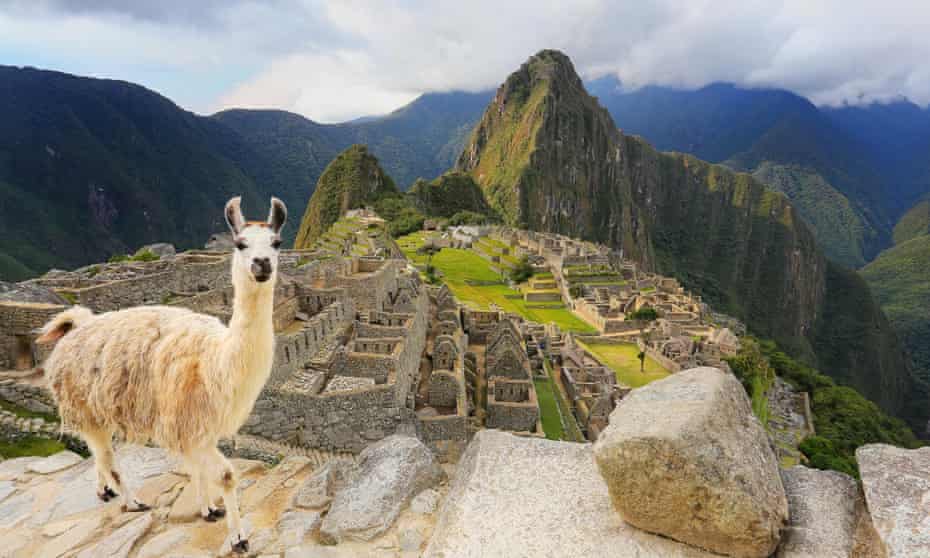
Most online presentations of Machu Picchu are only slightly better than the panoramas amateur photographers take. But You Visit’s virtual guide is high-res and beautifully lit by Andean sunlight. Offering overviews, closeups, courtyards, cliff-edge views and, crucially, some cute alpacas browsing beside the stone walls, it will whet the appetite or prompt a few fond memories. Click on the “highest resolution” tab to see a film about how the images were shot; another film, tagged “Huayna Picchu”, also contains decent moving footage.

Lima’s Museo Larco is a privately owned but world-class collection of pre-Hispanic pots, ceramics, gold pieces, jewellery and erotic objects, covering 5,000 years, with items from almost every corner of the country produced by Mochica, Chimú, Nazca and many other civilisations.
Peru celebrates its bicentennial this year. On 28 July 1821, after nine years of warring with colonial forces, José de San Martín declared the former vice-royalty’s independence from Spain. In fact, fighting continued until 1826, but once Lima was taken the fate of South America was more or less sealed. Epimetheus gives a 10-minute potted history of the country, ideal for beginners; this Spanish-language video focuses on the independence period.
Listen
Alongside Chile and Bolivia, Peru is often reduced to what people vaguely know about Andean music: panpipes, ponchos and little guitars made from armadillo shells. But Peru has a rich, multi-racial musical heritage and has long been a major producer of homegrown genres and rhythms, as well as hybrid easy listening, pop and rock.
Fifties superstar Yma Sumac, who had a cameo in Secret of the Incas, was a gifted coloratura soprano with a five-octave range; you can hear her fruity exotica songs on three-CD compilation The Quintessence (2019). Perhaps the coolest music to come out of Peru is Chicha, which flourished in the 1960s and 70s and melded surf rock, cumbia beats, imported psychedelic guitar sounds and traditional huayno. Compilation The Roots of Chicha (2007) and Visión del Ayahuasca (2019) by Los Wembler’s de Iquitos are excellent introductions to the scene.
From the 16th century, Africans arrived in Peru via Brazil and the Caribbean, usually as slaves; today, there are as many as 3 million Afro-Peruvians (census data is scant). Afro-Peruvian Classics: The Soul of Black Peru (1995), compiled by David Byrne for his Luaka Bop label, includes tracks by famous singers Susana Baca and Eva Ayllón as well as less familiar artists.
Taste
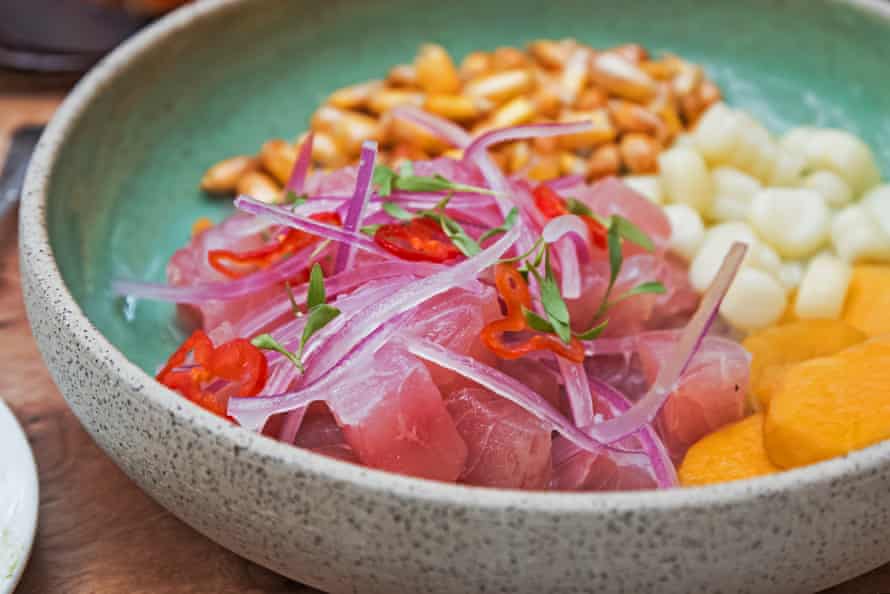
Ceviche classes are all over the internet; basically, chop really fresh white fish and soak it in lime juice and you can’t go far wrong. Another local classic, the causa, is a cold layer-cake made with potatoes and assorted other fillings. London-based chef Martin Morales offers a vegetarian causa cooking class on YouTube, and you can hear his Peruvian Road Trip show for Radio 4 on the BBC iPlayer.
To learn about Peru’s pisco sour cocktail, and see a barman make one, visit the website of Gran Hotel Bolivar in Lima.




